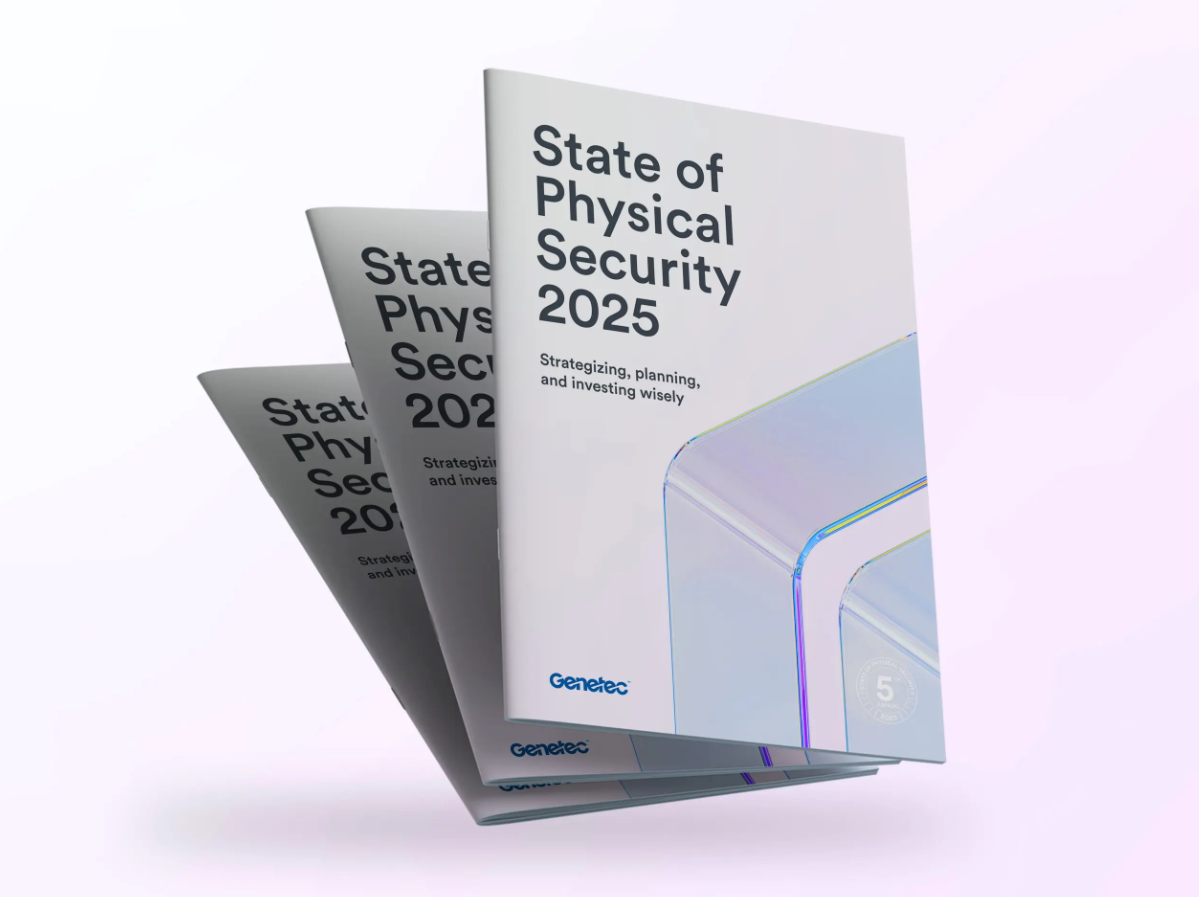Strategising, Planning & Investing Wisely By Nick Smith, Business Development Team Lead, Genetec Inc.
For five years now Genetec has produced its State of Physical Security Report, inviting physical security professionals from around the world to share their experience and insights. The following analysis and predictions from this year’s edition is built on the input of over 5,600 qualified respondents.
In 2025, the physical security industry will focus on maximising existing investments to enhance security, improve efficiency, and foster collaboration between teams. Even though there’s excitement around deploying emerging technology, the main priorities will be sustainable investments in cybersecurity and core technologies.
- Cloud Adoption: Pragmatism Trumps Hype
Almost half (48%) of end users in Europe ranked aging outdated physical security and/or IT infrastructure as a top challenge. As a result, while the adoption of cloud-based security infrastructure continues, organisations are becoming increasingly strategic about exactly how and where they deploy the cloud in their environment.
Looking forward, decision makers will put greater emphasis on hybrid cloud systems that combine on-premises, edge and cloud solutions according to what fits best. For example, many will seek out the best ways to centrally monitor remote sits from an on-premises headend system and reduce on-site maintenance work through lightweight and rapidly deployable hybrid cloud systems. Others will look to modernise existing video and access control capabilities without scrapping existing investments. Finally, those with deployments that are fully in the cloud may choose to optimise data processing and storage costs, or facilitate broader third-party integrations, by reintroducing some on-premises infrastructure.
Software-as-a-service (SaaS) solutions that are open, unified, and support hybrid-cloud environments will offer the most flexible path forward. Beyond adopting flexible deployment models, organisations will be able to combine video, access control, intrusion, intercom, and other sensors from a variety of manufacturers.
Cloud-managed appliances will be key for organisations who want to bring their existing hardware to the cloud. They’ll save time on deploying systems and save on the costs of changing non-compatible cameras or access control hardware – making the transition to the cloud easier.
- Intelligent Automation (IA) will be key to AI success
Moreover, 42% of respondents who work in procurement, management or the use of physical security technology plan to deploy some facet of AI in their security operations in the coming months. Yet, concerns related to privacy, ethics and the potential impact of data bias all remain prominent.
When applied thoughtfully, AI-enabled security solutions can be game-changing. Especially when organisations start by identifying key operational challenges and then solve them through intelligent automation (IA), which is a combination of artificial intelligence (AI), intuitive user experience (intuitive UX), and automation.
The most effective implementations are anchored in responsible AI, ensuring technology is both ethical and transparent. This approach not only mitigates risks but also enhances trust and compliance. It relies on organisations evaluating not only the AI technologies themselves but also the credentials of the partners developing and delivering them.
Physical security teams who integrate AI into their security systems will want outcome-driven benefits. These include automating event detection through video analytics and streamlining emergency response dispatch. By filtering and classifying events for human assessment and identifying process improvements, IA can transform data overload into actionable intelligence.
- Regulatory Compliance Considerations Prioritised
As cybersecurity threats and regulatory requirements grow, compliance has become a primary concern for security leaders. According to recent data, the cost of a data breach reached a record high in 2024, underscoring the need for robust compliance measures. Key regulations like GDPR, NIS2, SOC II Type II and ISO 27001 are shaping how organisations approach data protection, especially as more security systems rely on interconnected networks and cloud storage.
In 2025, organisations will focus on strengthening cyber hygiene practices, improving data encryption, and aligning with international and industry-specific regulatory requirements. This commitment extends to partnering with vendors who have the technical knowledge and resources to ensure compliance across various security systems.
When deploying new systems, IT and physical security teams will choose ones with built-in data protection and privacy tools. They’ll also look to cloud and hybrid-cloud solutions that automatically push upgrades and fixes to their physical security devices of choice.
- Cross-Team Collaboration Gains Traction
Since 2021, both end users and channels partners have consistently reported difficult hiring qualified personnel. This could explain why tools that help with ‘data analysis and visualisation’, and ‘improve collaboration between teams’, rank among the top 5 projects for 2025.
As staffing shortages and budget constraints persist, collaboration between security, IT, facilities, and human resources departments will become essential for effective security management. Work management software can help with cross-team collaboration, as it centralises information to improve communication with work dispatching, and resource management, as well as with reports and audits. Meanwhile, digital evidence management tools make it quicker and simpler for teams to collect, review and securely share footage with authorised third parties such as the police.
- Internal Stakeholders Demand More from Physical Security Systems
From IT teams and SecOps, to facilities and even HR, more people are getting involved in physical security management and buying decisions. In fact, when respondents were asked which departments was most involved, IT consistently ranked above the physical security department itself.
Physical security, traditionally viewed as a cost centre, is the unwitting custodian of incredibly valuable data about the flow of people, assets and vehicles. This is now commonly shared with IT departments but beyond this, there may be limited knowledge of its contents and value within an organisation. Integrations between security systems, other IoT devices, and operational technologies can fundamentally add value to wider operations. Could 2025 be the year this is increasingly embraced, enabling physical security professionals to present a clearer ROI for proposed investments?
It is clear Europe is embracing transformations in physical security, with a strong commitment to upgrading aging systems and enhancing cybersecurity measures. While fully on-premises solutions remain prevalent, there is a significant interest in hybrid deployments that can help address new challenges effectively.



